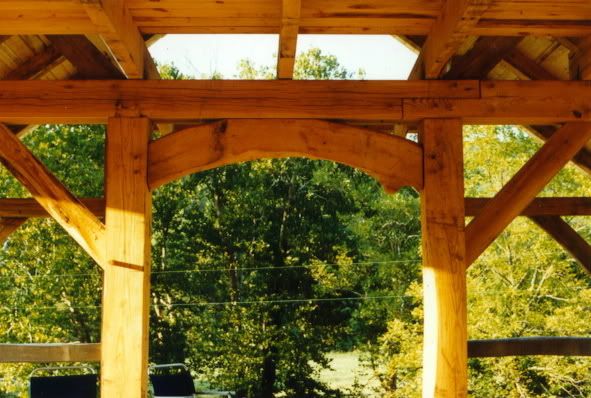I worked in a canoe livery at one point, the nearby river had a couple of class 3's so I spent the slow periods rebuilding boats. I was out of ash at one point and had some red oak so I rerailed a boat in oak. It lasted one weekend and the client insisted (more than most) that he had barely smacked the rocks. Looking at the damage I agreed.
I had done some checking a month or two ago while sawing some ash. If you design for deflection, as Ken noted, that's its "weakest" property. For other properties I've compared it to our northern red oak.
I had a email conversation with a client a month or 2 ago while I was sawing some ash, this is an excerpt;
looked in my old Forest Products Labs "Wood Handbook" at the average clear wood strength numbers. When I think of splitting I think of shear or tension perp.
Tension perp in dry white ash is better than northern red oak, it is stronger in horizontal shear, higher bending MOR, slightly lower MOE, impact is identical, higher in work to max load. Ash also has greater side hardness and compression parallell to and perp to grain. I think those must be the key.
I think my anecdotes are wrong, it probably doesn't split easier, it simply will not crush out of the way if presented with an ill fitting tenon or too much glue in a mortise but it is in most characterisitics somewhat stronger than good red oak although a little less stiff. In the furniture presses we had basically unstoppable assembly power so when we split it we though of it as easy to split, it probably just couldnt absorb bad workmanship as readily as the other woods we used.
Which led me to look at maple, since they've had problems with the new maple ball bats breaking. It is anywhere from a bit to alot inferior to white ash for a ball bat. Makes me wonder who thought of using it. Hickory or locust would kick its butt.
Of course the biggest concern at the moment is how soon the slabwood will be dry enough to throw in the stove.
..................
I raised a hot blister on my circular blade while sawing that ash and had to go visit the sawdoc. He asked what I had been sawing, thought I had been in some yellow pine. I said ash and he said "of course, you got gummed up" he said the bigger mills keep a few poplar logs around and run one through occasionally to clean the blade back up. It isn't a pitch but it does gum it up.
For many woods this is the NDS supplement containing wood design values, no ash as I'm sure you've found;
http://www.awc.org/pdf/2005-NDS-Supplement.pdfTangential shrinkage is what causes most of what has been described. The high point of Ken's description is the quarter sawn section, radial shrinkage is half of tangential. As the face moves further from that area the grain orientation fades to closer to tangential and the wood receeds more and more, leaving the inverted V face.


